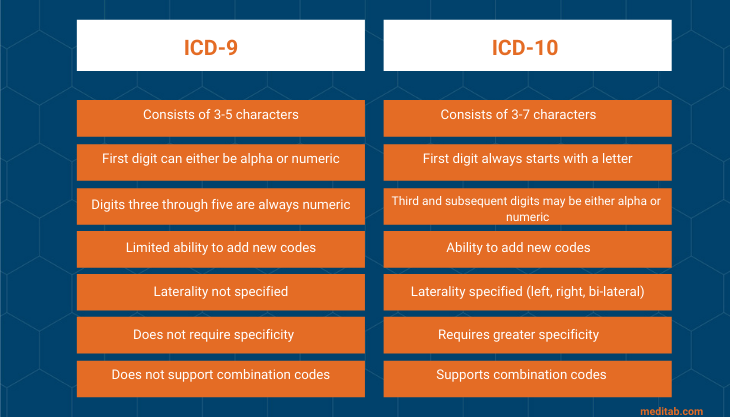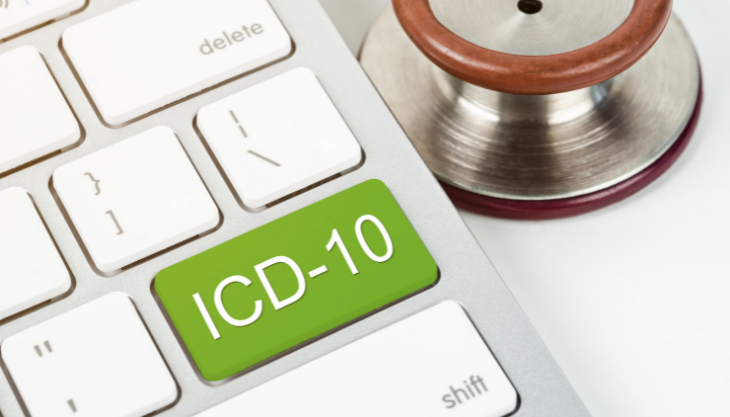What Is ICD-10 & Why Are ICD-10 Codes So Important for Healthcare?
Posted by Janna Vienca Cañezal
EHR Practice Management Medical Billing
It’s been nearly six years since practices and other healthcare systems were required to adopt a new E&M coding structure, ICD-10, in October 2015. Although the majority of healthcare professionals dreaded the change, the transition was necessary and long overdue.
The official international release of ICD-11 is still planned for 2022, meaning the eventual US transition to yet another ICD coding system is only a few years away. With that in mind, it’s worth taking a look at the state of ICD codes, the role ICD-10 has played, and where the system could still improve.
Up until 2015, the US healthcare system had used ICD-9 since 1979. Healthcare is constantly changing, and today’s healthcare needs are far different than 40 years ago. Some of the ICD-9 codes had outdated terms and didn’t even reflect modern medical practices. It gave limited data about a patient’s medical condition, and the structure of ICD-9 restricted the number of new codes that could be added, with many ICD-9 categories already full. As a result, a new coding system was born.
What Is ICD-10?
ICD-10 is the tenth revision of the International Classification of Diseases (ICD) authored by the World Health Organization (WHO). ICD is the foundation for identifying health trends and is the international standard for reporting diseases and health conditions. Providers and hospitals around the world use ICD codes to classify diseases, illnesses, and injuries, while insurance companies use that information to process claims.
What's the Difference Between ICD-9 and ICD-10?
The difference was more than just a new numbering system. ICD-10 differed from ICD-9 in its organization and structure, code composition, and level of detail.
ICD-10 currently has over 70,000 codes to choose from, compared to ICD-9’s 14,000 codes. The codes are alphanumeric and consist of 3-7 characters, allowing for greater specificity and the ability to add new codes as new illnesses emerge. The additional characters in ICD-10 allow for more detailed information like laterality, a listing of the body part, the device used, approach, and other essential qualifiers. ICD-10 codes always begin with a letter, while the first digit of an ICD-9 code can either be alpha or numeric.
Additionally, ICD-10 supports combination codes, making it possible to use one code for multiple diagnoses.

Why Are ICD-10 Codes So Important for Healthcare?
ICD-10 has been the most monumental coding change in the US healthcare system in almost 40 years. Although it gave a few challenges to practices, it also provided long-term benefits. The system now reflects current medical practices. It streamlined workflows, enabled better communication between providers, and offered transparency to patients. Even that, though, is just the beginning.
1. Better Clinical Documentation and Improved Quality of Care
One of the most significant benefits of ICD-10 is its ability to provide accurate and complete information to providers. ICD-10 codes indicate laterality, stage of care, specific diagnosis, and specific anatomy, which creates a more accurate picture of the patient’s condition. That allows the provider to allocate proper care and resources, eventually providing better outcomes.
Accurate documentation of a patient’s diagnosis leads to a better healthcare experience and is helpful for the other providers who will later access the patient’s health records. It also means improved patient safety and fewer requests for documentation by payers to support diagnoses.
Read More: 4 Steps to Help Improve Patient Communication
2. Tracking Public Health Conditions and Setting Up Health Policies
ICD-10 was also created to support public health. It can help healthcare organizations capture public health disease data, track global health threats, respond to early pandemic patterns, and help create better healthcare policies.
Additionally, it provides data for measuring and tracking health care utilization, quality of patient care, and establishing preventive care and disease management programs.
3. Faster Turnaround Times for Billing, and Fewer Denials
The level of specificity in ICD-10 codes helps reduce errors and confusion when billing, leading to fewer rejected claims. It also reduces the frequency of claims being denied for a “lack of medical necessity.” The more streamlined a claims submission process is, the faster it is for you to get paid.
4. Improved Data for Research
That specificity is also helpful for research. ICD-10 codes help expose previously hidden relationships between health conditions, help save thousands of lives, and save billions in medical care costs.
In clinical research trials, ICD-10 codes lead to better information gathering on adverse effects and better outcome assessment reporting.
5. Better and Fair Payments
Because ICD-10 provides more detail to medical conditions and services delivered, it helps payers and policymakers improve our current reimbursement system and implement pay-for-performance programs.
Additionally, since ICD-10 is more granular than the previous editions, patients are appropriately charged for the treatment given, and providers are paid fairly for what they do.
Read More: Learning from Patient Payment Trends and Increasing Your Revenue
6. Fraud Management
In turn, ICD-10 codes can help also detect potential fraud and exaggerated claims, lessening medical care costs. The system enables you to check for inconsistencies between procedure codes and diagnoses and for illogical combinations of codes.
Fewer gray areas in medical billing make it difficult for dishonest individuals to hide behind ambiguities or loopholes in code descriptions.
Automating the Billing Process with Your EHR

While ICD-10 codes are far from perfect and complete — the International Classification of Diseases has continued to update the codes every year — there's no doubt this iteration of the system has been a large step in the right direction.
That said, using it effectively still requires an extensive commitment from your team. Whether looking at the final years of ICD-10, or the impending transition to ICD-11, practices need to be aware of how best to use the codes and understand each round of changes to get paid on time and minimize rejections.
That's where an EHR-integrated billing system can help, taking the burden off you and your staff.
Meditab’s EHR software, IMS, supports ICD-10 codes and is regularly updated to reflect the yearly changes. You can automate your billing process with ICD code templates and other features that save your practice the headache of handling it yourself, all while keeping your revenue flowing. Want to see the latest in automated ICD billing?
Share this post: on Twitter on Facebook on Google+


